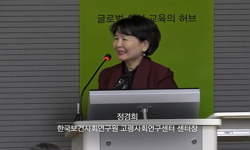본 논문은 건조 환경의 치명적인 파괴를 초래한 동일본 대지진이 일본 건축계에 가져온 새로운 사유와 실천에 관한 연구이다. 역사적으로 재난으로 인한 파괴는 새로운 창조의 원동력으로 ...
http://chineseinput.net/에서 pinyin(병음)방식으로 중국어를 변환할 수 있습니다.
변환된 중국어를 복사하여 사용하시면 됩니다.
- 中文 을 입력하시려면 zhongwen을 입력하시고 space를누르시면됩니다.
- 北京 을 입력하시려면 beijing을 입력하시고 space를 누르시면 됩니다.
인구감소시대의 건축디자인: 동일본대지진 이후의 건축 연구
한글로보기https://www.riss.kr/link?id=G3788034
- 저자
-
발행기관
-
-
발행연도
2017년
-
작성언어
Korean
-
주제어
동일본 대지진 ; 3.11 ; Demographic change ; ageing society ; slow growth ; East Japan earthquake ; 3.11 ; Temporary Housing ; Shelter ; Ito Toyo ; Kuma Kengo ; Ban Shigeru ; Yamamoto Rikken ; Sejima Kazuyo ; Homes for All ; ArchiAid ; 이토 도요 ; 야마모토 리겐 ; 후지무라 류지 ; 인도주의 건축 ; 비저너리 건축 ; 구호건축 ; 은신처 ; 가설주택 ; 고령화 사회
-
자료형태
한국연구재단(NRF)
-
0
상세조회 -
0
다운로드
부가정보
국문 초록 (Abstract)
본 연구는 동일본 대지진에 개입한 건축가들의 대응을 재난 이후 일본 사회 전반에서 등장한 담론적 흐름 속에서 1) 원시주의적 은신처의 모색 2) 기술 관료적 도시 비전의 제안 3) 미래주거에 대한 활동가적 개입으로 분류해 논의한다. 동일본 대지진 직후 등장한 다양한 건축적 실천과 담론들은 예외적인 극한 상황에서 일시적으로 작동하는 인도주의적 구호 건축이라는 협소한 범주를 넘어서, 현대 일본 건축계의 첨예한 쟁점들을 극적으로 보여주는 일본 건축의 축소판으로 논의될 수 있다. 정부 주도로 진행된 공식적인 재건 활동과 거리를 갖고 진행된 건축가들의 재난 이후의 활동은 상업주의에 매몰된 주류 건축계를 쇄신하려는 시도인 동시에, 건축의 보다 적극적인 사회적 역할에 대한 모색, 나아가 인구감소와 고령화 시대로 정의되는 미래의 건축 문화를 창출하려는 노력으로 확장된다.
본 논문은 건조 환경의 치명적인 파괴를 초래한 동일본 대지진이 일본 건축계에 가져온 새로운 사유와 실천에 관한 연구이다. 역사적으로 재난으로 인한 파괴는 새로운 창조의 원동력으로 작용하며 건축과 도시의 발전에 중요한 전환점으로 작용해왔다. 특히 지진과 해일 등 각종 자연 재해와 전화에 취약한 섬나라 일본은 재난을 계기로 정교한 건축규제와 고도의 내진공법을 발전시키며 독특한 건축문화를 발전시켜 왔다. 1923년 간토대지진이 전통적인 목조도시인 도쿄를 근대적인 도시계획에 기초한 불연의 콘크리트 도시로 바꾼 결정적인 계기가 되었다면, 이차대전 이후의 폐허는 건축가들에게 기존의 도시맥락에 얽매이지 않고 새로운 대도시를 건설할 일종의 타블라 라사(tabula rasa)를 제공했다. 20세기의 대재난이 지진과 전화에 견딜 수 있는 강력하고 거대한 근대건축의 발전을 촉진시켰다면, 2011년 3월 11일 발발한 동일본 대지진은 근대건축의 전제와 흐름에 대한 근본적인 회의를 초래했으며, 나아가 근대 이후 건축의 미래에 대한 진지한 모색으로 이어졌다.
본 연구는 동일본 대지진에 개입한 건축가들의 대응을 재난 이후 일본 사회 전반에서 등장한 담론적 흐름 속에서 1) 원시주의적 은신처의 모색 2) 기술 관료적 도시 비전의 제안 3) 미래주거에 대한 활동가적 개입으로 분류해 논의한다. 동일본 대지진 직후 등장한 다양한 건축적 실천과 담론들은 예외적인 극한 상황에서 일시적으로 작동하는 인도주의적 구호 건축이라는 협소한 범주를 넘어서, 현대 일본 건축계의 첨예한 쟁점들을 극적으로 보여주는 일본 건축의 축소판으로 논의될 수 있다. 정부 주도로 진행된 공식적인 재건 활동과 거리를 갖고 진행된 건축가들의 재난 이후의 활동은 상업주의에 매몰된 주류 건축계를 쇄신하려는 시도인 동시에, 건축의 보다 적극적인 사회적 역할에 대한 모색, 나아가 인구감소와 고령화 시대로 정의되는 미래의 건축 문화를 창출하려는 노력으로 확장된다.
다국어 초록 (Multilingual Abstract)
This study examines how the Great East Japan earthquake and subsequent nuclear accident in Fukushima have triggered new thinking and practice in Japanese architecture. Historically, catastrophic disasters have served as a critical turning point in the development of architecture and urban design of Japan, a disaster-prone island country. If the Great Kantō Earthquake that devastated
This paper aims to discuss architectural interventions in disaster as a microcosm of contemporary Japanese architecture by situating them within a broader intellectual and political discourse of Japanese society after the disaster. Frustrated by the s...
This paper aims to discuss architectural interventions in disaster as a microcosm of contemporary Japanese architecture by situating them within a broader intellectual and political discourse of Japanese society after the disaster. Frustrated by the slow and inefficient government response to the disaster, a number of architects rushed to take part in relief efforts and reconstruction projects immediately after the disaster. This essay draws a map of a variety of architectural responses after the disaster by delineating three tendencies according to discrete attitudes of architects: 1) primitive retreat to a shelter, 2) technocratic vision of urban plan 3) activist intervention in housing problems. These three models represent the competing efforts to reconfigure a new relationship between architecture and society by overcoming aesthetic isolation and excessive consumerism prevalent in the discipline.
This study examines how the Great East Japan earthquake and subsequent nuclear accident in Fukushima have triggered new thinking and practice in Japanese architecture. Historically, catastrophic disasters have served as a critical turning point in the development of architecture and urban design of Japan, a disaster-prone island country. If the Great Kantō Earthquake that devastated











